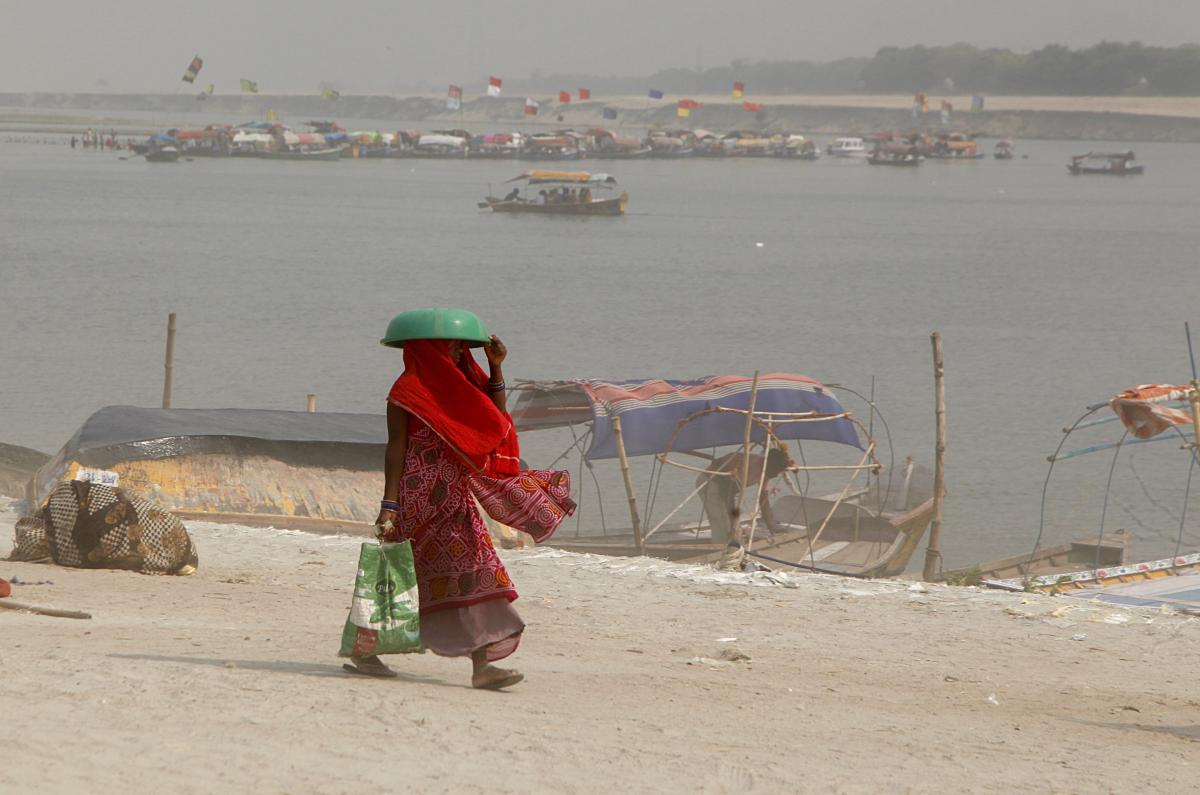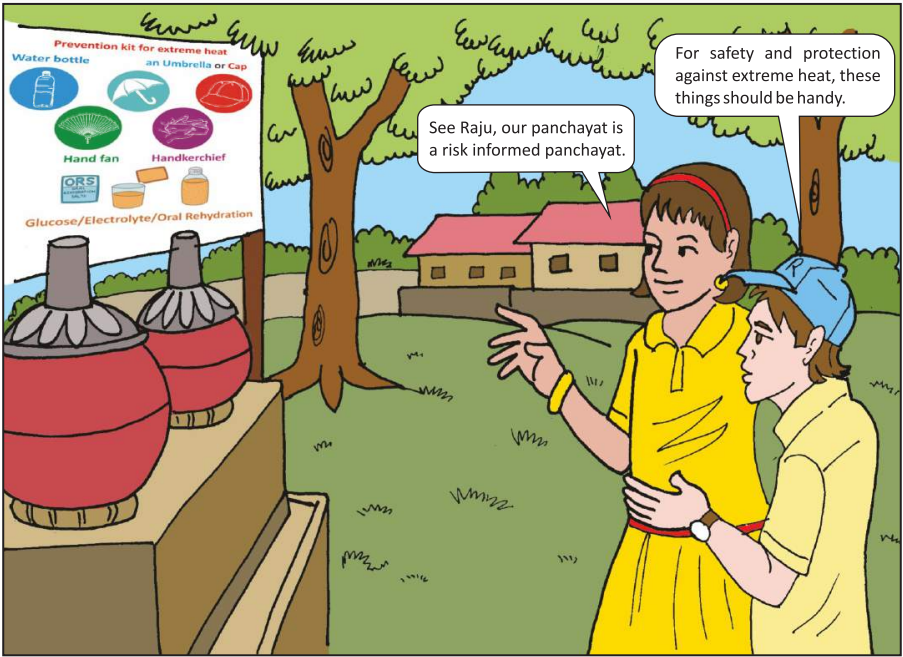



It’s just February in 2023, and heat extremes have already hit the headlines. The season’s first heatwave alerts have been announced in the Kutch and Konkan regions, primarily driven by weak western disturbances. Climate change is also estimated to have made heat extremes 30 times more likely in South Asia, with India facing its five warmest years since 1901 all in the last decade. India needs robust Heat Action Plans (HAPs) to prepare for and deal with such extremes.
A similarly early and prolonged heatwave in 2022 led to a 10-35 per cent reduction in crop yields in Punjab, Haryana, Uttar Pradesh and created unprecedented spikes in energy demand. While there is no consistency in data on heat wave mortality, a study by IMD (India Meteorological Department) researchers found that more than 17,000 lives have been lost due to heatwaves in India since 1970.
HAPs are essential adaptation measures to protect communities and save lives from extreme heat, which serve as primary documents that lay out the procedures, responsibilities, early warnings and response mechanisms for line departments and government agencies during a heatwave. For instance, Ahmedabad’s 2013 Heat Action Plan, the first in the country, is estimated to have avoided approximately more than 1,000 deaths since implementation. Now, city, state and national-level authorities in India are ramping up efforts to revamp the HAPs at a sub-national level. The NDMA (National Disaster Management Authority) and IMD are currently working with more than 23 states and their cities to develop HAPs. With March of 2022 being the hottest on record in India and as we brace for a forecasted El Niño season in 2023, there is a need to step up implementation measures.

A woman braves the heat wave at the Sangam bank of Ganga and Yamuna, Prayagraj, India. Source: iStock
First, incorporate granular heat vulnerability assessments because the majority of HAPs lack hotspot-based interventions. A study by NDMA that studied more than 50 HAPs from India, Bangladesh and Nepal concluded that the lack of focused hotspot-based priority interventions was one of the key barriers to implementing HAPs. This type of vulnerability mapping can be done by leveraging the latest advancements in geospatial technology, coupled with field-based assessments. This would involve using fine-resolution satellite data to map land use, population distribution, and other factors such as built-up, vegetation fraction, and land surface temperatures that influence the heat sensitivity of a region. While currently, the reliance for data is on global satellites such as Sentinel and Landsat, the latest National Geospatial Policy 2022, which aims to democratise fine-resolution indigenous geospatial data, is an essential endeavour in this regard. The government authorities could collaborate with research institutions and NGOs to carry out such assessments.
Second, include dynamic heat indices and establish region-specific thresholds in forecasts and early warning systems. Given India’s heterogeneous climate and the dynamism shown in heat extremes, a one-size-fits-all approach of providing impact-based heat forecast alerts can lead to an underprediction. This would first involve carrying out a scientific climatological analysis based on regional profiling of various temperature indices that capture both day-time and night-time anomalies that are more indicative of human heat stress such extreme heat days, warm nights, and apparent temperatures. The forecast systems setup under the National Monsoon Mission should be calibrated to regional thresholds and these indices be modelled with health impacts and energy demand using historical trends. For example, the Odisha State Disaster Management Authority has collaborated with IMD to define region-specific thresholds that combine humidity and temperature, which is more representative of human heat stress rather than just absolute air temperature.
Third, effective and innovative IEC (information, education, and communication) is crucial in getting essential messages out to communities in advance. In order to socialise the alerts given through scientific assessments and to reach vulnerable groups, early warning heat alerts in a palatable format and ‘Dos and Don'ts’ should be made available in local languages and promoted through social media channels, emails, radio, bulk text messages, and mobile applications such as WhatsApp. For instance, the Gujarat Institute of Disaster Management (GIDM) developed a training module and a comic book in vernacular language and uses a simple, colour-coded, early warning system to alert residents and offices of extreme temperatures.

Source: Get ready to beat the heat (Gujarat Institute of Disaster Management)
Lastly, establishing proper mechanisms for robust inter and intra-governmental and agency coordination during peak heat waves is crucial for implementing the HAPs effectively. This could be done via setting up heatwave committees as done in Odisha and Telangana (National Institute of Disaster Management 2018) and by appointing chief heat officers as done in global cities such as Miami, Los Angeles, and Athens. These committees, led by a nodal agency – preferably the Disaster Management Authorities – should be established at state and district levels. The nodal agency should identify other key stakeholder departments such as health, education and energy, and establish a proper chain of communication to disseminate early warnings received from the meteorological agencies so that it reaches the first responders timely. The committees can also carry out capacity building and training programmes for first responders in advance such as healthcare professionals in neighbourhood clinics and should involve private medical practitioners and civil society organisations in the process.
As we head into an El Niño season, which is found to be highly correlated with warmer and drier climatic conditions, India can lead the way by developing ‘model Heat Action Plans’, which would involve key components of scientific expertise, interagency coordination, public health, community engagement strategies and regional planning. India should leverage its role in the Disaster Risk Reduction (DRR) group under the G20 by building HAPs that are focused on the principles of risk reduction over disaster response. Finally, while urban areas remain the focus due to cascading effects of different factors leading to Urban Heat Islands, we need to ensure that rural India, especially those that are agriculture dominant, should not be left out.
Shravan Prabhu is a Research Analyst at the Council on Energy, Environment and Water (CEEW). Send your comments to [email protected].






Add new comment